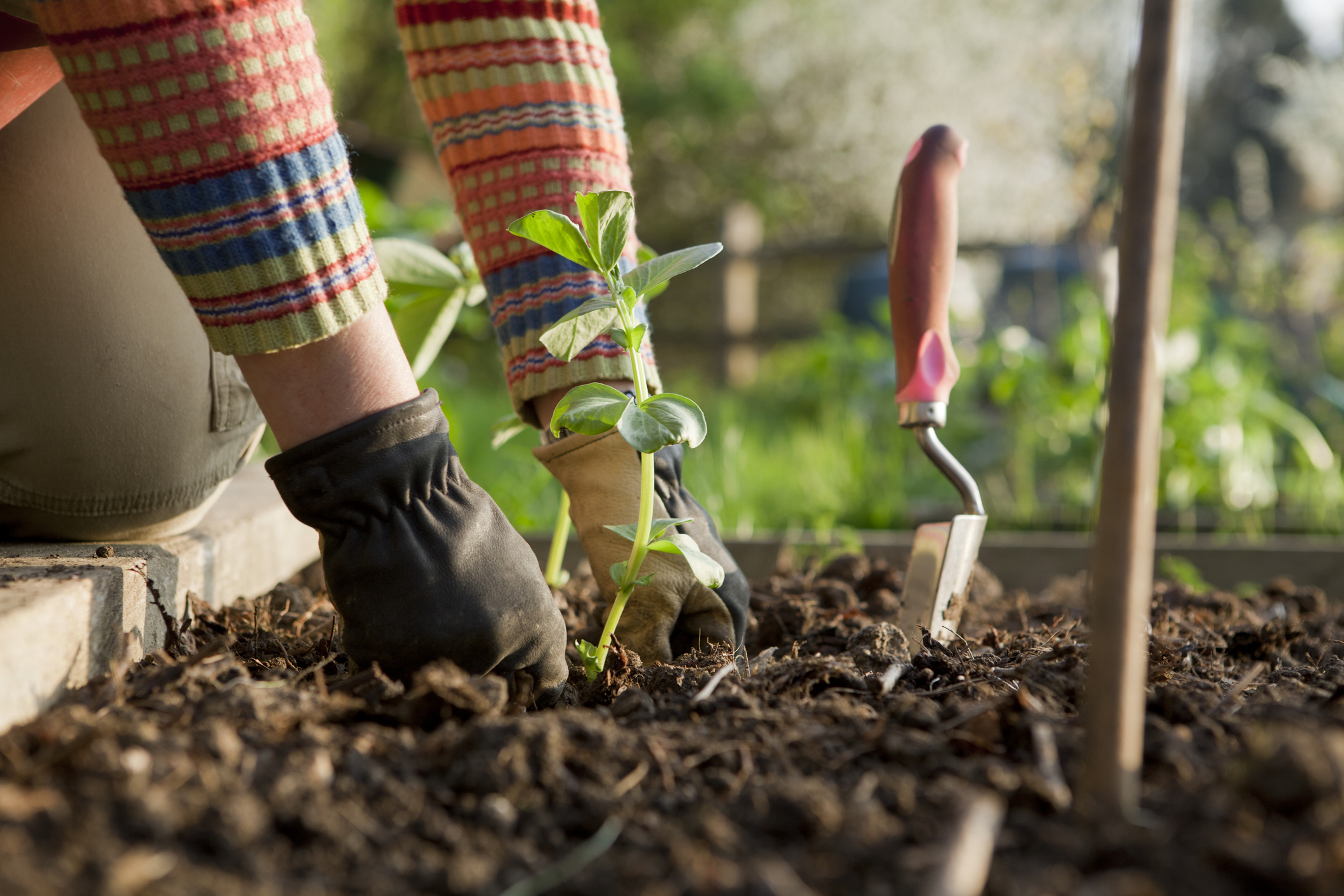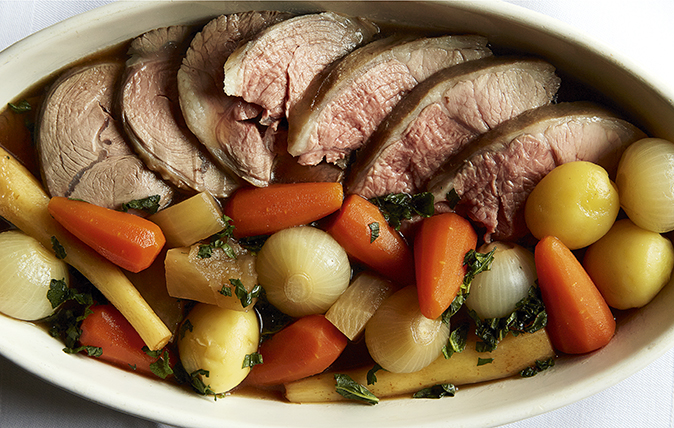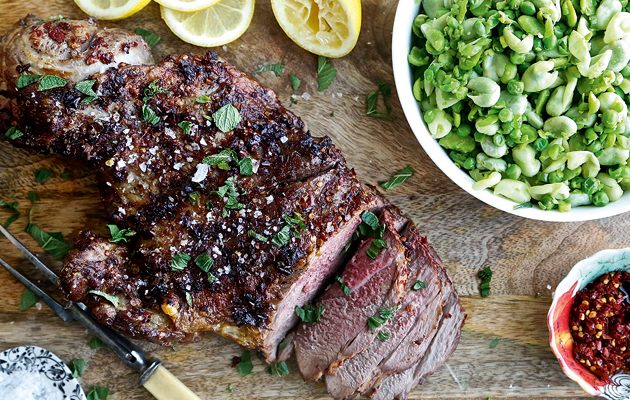How to grow broad beans: How to plant them, how to look after them, and the best varieties for your garden
Mark Diacono names the best broad beans for flavour, reliability, tenderness and the beauty of the plant itself.


A while ago, when renting, we spent a year without a garden. In many ways, it was a refreshing break from the commitments a garden presents, offering the chance to daydream about what I’d like to do in our next garden and work out what I could do without. In other ways, it was a special torture, being denied the simple pleasures that come from a patch of your own. I was perhaps most surprised by the absence of the everyday, unglamorous familiars of the vegetable patch, and none more so than broad beans.
Homegrown broad beans — being so much quicker from plot to plate — are so very superior to those in the shops, but I craved the flavour of the under-appreciated succulent young leaves just as much. Perhaps most of all, I missed the flowers. Unremarkable as they may seem, their presence gives me an early-season lift, although it is their perfume that gets me most of all. Sweet and bright, they carry the optimistic scent of spring. They were the first thing I sowed when we arrived in our new garden.
I have a few long-trusted varieties. There is little to choose between many when it comes to flavour, but reliability, tenderness of beans, height, suitability to early sowing and beauty are equally pressing considerations. ‘Bunyard’s Exhibition’ and ‘Green Windsor’ are two favourites of mine for spring sowing. Both reliably produce superb pods of delicious beans, with the former a tall, early variety that’s been popular since Victorian times. If you like to sow a few rows in autumn for an especially early harvest, it really ought to be ‘Aquadulce Claudia’, with their long pods full of small, tender beans.

Purple-flowered varieties taste no different to others and their beans carry only a light flush of purple, but the flowers look beautiful before the beans arrive: ‘Grando Violetto’ is superb. If you are growing broad beans in tall raised beds or containers or if you are in a particularly windy location, ‘The Sutton’ is a hardy variety that grows to more than 1½ft or so tall and is perfect for that.
Peas and beans like a long root run: broad beans are no exception. I start most off under cover using root trainers (deep modules) that allow the roots plenty of room to develop. Card loo-roll inners are very effective substitutes. I sow the first batch of the year in the last week of February and subse-quent batches every three weeks until the end of May. Each takes four to six weeks to get to transplanting size, giving me a steady succession of planting out, which leads to a steady stream to harvest.
"If you see ants climbing your plants, it’s time to take action"
You can sow direct from March, but I find the pleasure of starting something off when it’s still winter makes spring feel nearer and the better success rate of those started undercover makes it feel more worthwhile. If you want an earlier harvest, you can sow broad beans direct in November. With luck, you’ll be harvesting in April, but choose a good hardy variety (see above) and don’t be surprised if birds and mice take a few or the wet, cold winter does for some. Whether sowing in modules or direct, sink the seed about 1½in below the surface.
Whether sowing direct or plant-ing out, allow 8in between each, with rows 2ft apart. The only two things you really need to do after that are to stake tall varieties and to pinch out the top inch or so of growth on the main stem when the flowers have just wilted and the first pods start to appear. This removes the aphids’ favourite part of the plant and thereby reduces the likelihood of an infestation. It also directs the plant’s energy to the developing pods. Don’t dis-card the tips: they are succulent and delicious. Unlikely as it may seem in this country, if there is an extended dry period you will need to water the plants to keep them developing steadily.
Exquisite houses, the beauty of Nature, and how to get the most from your life, straight to your inbox.
If you see ants climbing your plants, it’s time to take action. The ants don’t cause harm themselves, but they can detect — even in tiny doses — the honeydew that aphids release and it could be that it’s about to be blackfly party time. If you haven’t done so already, this is the time to remove the tips from the main stem and spray your plants with water to dislodge any aphids.
Growing pollinator-friendly plants nearby helps keep a natural balance by attracting aphid predators such as ladybirds, but you could also consider ordering some ladybird larvae online to release on your plants. Pea and bean weevils might nibble stamp-like notches in the leaves, but the damage is cosmetic only and the fungal disease chocolate spot is minimised where air circulation is good and where you have watered through dry spells.
Mark Diacono grows edibles, both usual and unusual, at Otter Farm in Devon. His book Spice: A Cook’s Companion published by Quadrille, £25, is out now.

Navarin poached lamb served with creamed broad beans and mint
Simon Hopkinson pairs succulent new lamb with creamy, tender broad beans and a new take on an old ice-cream favourite.

Mushy broad beans with spicy butterflied leg of lamb
Served with spicy butterflied leg of lamb or mashed into hummous: just two of our favourite broad bean recipes this

Tom Parker-Bowles: Broad beans, the 'quintessence of early summer' that show the brute power of culinary simplicity
Once believed to be vessels for the souls of the recently departed, a freshly picked pod with broad beans nestling
Mark is lucky enough to spend most of his time eating, growing, writing and talking about food. He has written fourteen award-winning books, including A Year at Otter Farm and A Taste of the Unexpected (both won Food Book of the Year, and Garden Book of the Year). Known for growing everything from Szechuan pepper to pecans to Asian pears, Mark's refreshing approach to growing and eating has done much to inspire a new generation to grow some of what they eat. He was involved in the early days of River Cottage, appearing in the TV series, and writing four River Cottage books. Mark writes to a global audience on his best-selling Substack: Mark Diacono’s Abundance.
